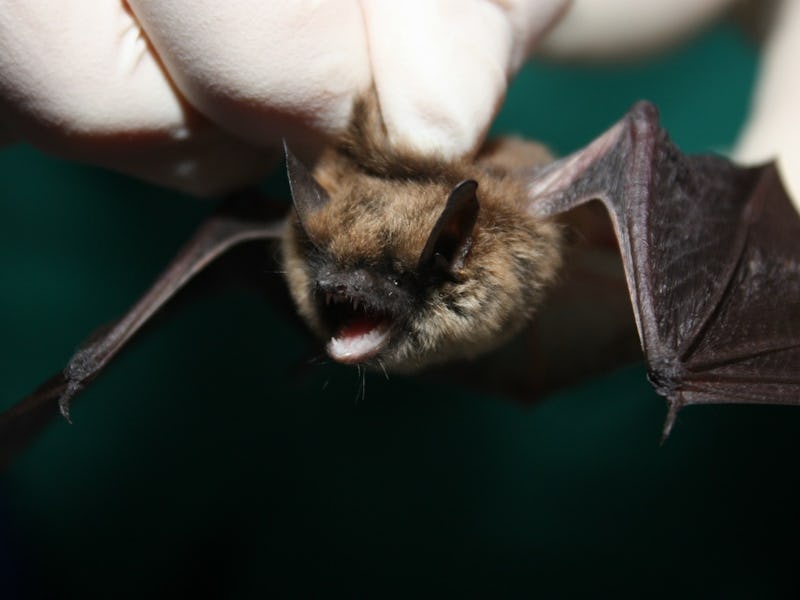Rabies Still Poses a Threat in the U.S.
A Wyoming woman has just contracted the virus.

Just days after World Rabies Day, the Wyoming Department of Health confirmed the state’s first-ever case of human rabies.
A woman in Fremont County is believed to have contracted the virus after coming into contact with bats. Details of her exposure to the infected animals have not been released, but state public health veterinarian Dr. Karl Musgrave notes in a statement rabies is extremely common in Wyoming’s bat and skunk populations.
While there are plenty of furry critters carrying the rabies virus around the country, there aren’t many people getting it.
“Across the United States, there are usually only one or two human cases in a year,” explains Musgrave.
Rabies in Humans
For plenty of city- and ‘burb-dwelling Americans, Old Yeller was their first introduction to the horrifying effects of rabies when left untreated. Thanks to that tragic pup, we’ve seen what kind of havoc rabies wreaks on animals. But what happens to people?
According to the Centers for Disease Control and Prevention, rabies can be found in the saliva and nervous system tissue of an infected animal or human and can be spread through bites, open wounds, and mucous membranes like the eyes and mouth.
Once exposed, a person with the early signs of rabies may exhibit flu-like symptoms. If the virus was transmitted through a bite, there may be irritation at the site of the wound, too. After several days, the virus often proves fatal and an infected individual’s health rapidly declines with delirium, hallucinations, and abnormal behavior taking hold.
“Unfortunately, rabies is a serious, deadly disease once the illness develops,” Musgrave says.
Preventing Rabies
While rabies only affects a very small portion of the U.S., there are thousands of cases reported around the world, particularly in low-income areas without the resources to administer pre-exposure vaccinations to both domestic and stray dogs, some of the most prevalent spreaders of the virus. According to the World Health Organization, over 99 percent of cases in Asia and Africa are dog-mediated transmissions. The WHO is working to eradicate dog-mediated human rabies by funding prevention programs that have proved immensely effective in lowering the number of cases. Rabies-related deaths in Bangladesh decreased by 50 percent between 2010 and 2013 thanks to the WHO’s preventative measures like mass dog vaccination.
With proper medical care soon after exposure, rabies is treatable in humans. The first line of defense after being bitten is the simplest: soap and water. Cleansing the area right away is much more likely to reduce the risk of infection. Next, seek out medical care to get post-exposure for doses of vaccinations, including both the human rabies immune globulin (HRIG) and a rabies vaccine over a period of two weeks.
These vaccinations are a necessary rabies treatment even without having been bitten, as shown in one meteorologist’s rabies scare.
Minnesotan weatherperson Sven Sundgaard received the post-exposure treatment after having awoken with a bat on his face during a stay at a cabin. Sundgaard didn’t recall being bitten, but was advised to get the vaccinations anyway. The treatment proved painful for both his body and his wallet. Multiple injections in his arms and buttocks left Sundgaard too sore to work and cost him $2,000 out of pocket after insurance for the $3,500 vaccinations.
The easiest way to prevent exposure to rabies in the U.S. — barring any random bat interactions like Sundgaard’s — is simple: Stay a safe distance away from wildlife like bats and skunks and other at-risk animals. If you happen to find a bat in your home or you stumbled upon an injured animal while out and about, don’t take matters into your own hands. Leave it to animal control and avoid the literal pain in the butt.